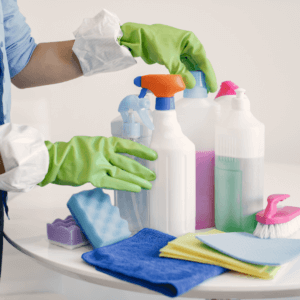Interview with a Soot Removal Expert: Insights and Advice
Interview with a Soot Removal Expert: Insights and Advice
Key Takeaways
- Essential Tools for Soot Removal: The article highlights the importance of using specific tools such as HEPA vacuums, dry chemical sponges, and air scrubbers to effectively remove soot without spreading it further.
- Techniques Matter: Effective soot removal requires more than just the right tools; the application of appropriate techniques like vacuuming, chemical sponging, and thermal fogging is crucial for thorough cleaning and odour neutralisation.
- Surface-Specific Approaches: Soot adheres differently to various surfaces, necessitating tailored approaches for cleaning fabrics, upholstery, and hard surfaces to avoid damage and ensure thorough removal.
- Preventive Measures: Regular maintenance of heating systems and immediate action post-fire are advised to prevent soot buildup and mitigate secondary damage, emphasizing the role of prevention in soot management.
- Professional Expertise Is Key: The article underscores the importance of engaging with certified soot removal professionals who can assess and address soot damage effectively, ensuring long-term safety and cleanliness.
Summary
This article discusses the intricacies of soot removal, emphasising the need for specialised tools and techniques to effectively clean various surfaces and restore air quality. It highlights the importance of professional expertise in managing soot damage, using appropriate methods for different materials, and the advantages of preventative measures. Future advancements in eco-friendly and automated soot removal technologies are also mentioned as key to improving efficiency.
In the world of property maintenance and restoration, soot removal stands out as a critical service. It’s not just about cleaning; it’s about restoring safety and comfort to environments affected by fire or smoke damage. To provide deeper insights into this essential service, we spoke with a leading expert in the field, who shared valuable advice and perspectives that are pivotal for both homeowners and professionals.
Understanding the Basics of Soot Removal
Soot removal, as explained by our expert, involves the meticulous process of cleaning up the fine black particles that are left behind after a fire. These particles are not only unsightly but also hazardous to health. The expert emphasised that the primary goal of soot removal is to ensure that indoor air quality is restored and that surfaces are free from any particulate matter that could cause damage or health issues over time.
The Right Tools for the Job
When asked about the tools essential for effective soot removal, our expert highlighted several key pieces of equipment:
- HEPA Vacuums: Essential for trapping fine particles without recirculating them into the air.
- Dry Chemical Sponges: Used to remove soot from walls without smearing.
- Air Scrubbers: Vital for capturing airborne soot and other contaminants.
These tools, combined with proper techniques, form the backbone of effective soot removal strategies.
Professional Techniques in Soot Removal
Our expert shared that the technique is just as important as the tools. Techniques vary depending on the surface and the extent of damage but typically involve a combination of vacuuming, chemical sponging, and thermal fogging—a method that neutralises odour and soot particles lingering in the air.
Soot Removal from Different Surfaces
Soot can adhere to almost any surface, and each type requires a specific approach. For example:
- Fabrics and Upholstery: These are cleaned with specific detergents and may require ozone treatment for odour removal.
- Hard Surfaces: Non-porous surfaces like metal and glass can often be cleaned with stronger solvents and scrubbing techniques.
Preventing Soot Buildup and Secondary Damage
Prevention is a critical aspect of soot management. Regular maintenance of heating systems and chimneys can significantly reduce the risk of soot buildup. Additionally, our expert advises on the importance of quick action following a fire to prevent soot and smoke from causing secondary damage to the structure and contents of a building.
Challenges and Solutions in Soot Removal
One of the major challenges in soot removal is dealing with delicate items and surfaces that are easily damaged. Our expert advises using gentle methods first, escalating only as necessary to avoid damaging sensitive materials. They also stressed the importance of professional assessment to determine the most effective cleaning method for each unique situation.
The Future of Soot Removal Technologies
Looking ahead, our expert predicts advancements in soot removal technologies and methods, particularly in the areas of eco-friendly solvents and automated cleaning systems. These innovations promise to improve efficiency and effectiveness, reducing the environmental impact of cleaning processes.
The Importance of Professional Expertise
For those facing soot damage, the value of professional expertise cannot be overstated. Our expert recommends consulting with certified professionals who can assess the damage thoroughly and implement a targeted cleaning strategy. This approach not only ensures that the property is properly restored but also helps in preventing long-term issues related to soot exposure.
Soot removal is a sophisticated field that requires deep understanding and precise execution. Our expert’s insights underline the importance of combining the right tools with the correct techniques and the knowledge to apply them appropriately. For those dealing with the aftermath of a fire, engaging with professionals who have the right expertise is crucial.
FAQs
What is soot, and why is it harmful?
Soot is a black powdery or flaky substance produced by incomplete combustion of organic materials like wood, oil, or coal. It’s harmful because it can contain a variety of chemicals and acids that are hazardous to health, potentially causing respiratory issues and other health problems.
How can I safely remove soot from my home?
Safely removing soot involves wearing protective gear (like masks and gloves), using a HEPA vacuum to remove loose particles, and then cleaning surfaces with dry sponges or appropriate cleaning agents. It’s often recommended to seek professional help, especially for extensive damage, to ensure thorough cleaning without spreading the soot further.
Can soot damage be covered by insurance?
Soot damage is often covered under standard property insurance policies if it results from a covered peril, such as a fire. However, policy specifics can vary, so it’s important to check with your insurance provider to understand the scope of coverage and any exclusions or conditions.
Why Choose Us?
AllAces Cleaning & Restoration has over 35 years of industry experience handling extensive soot removal projects across Brisbane, Sydney, Melbourne and surrounds. Our IICRC-certified technicians utilise the latest technology and equipment to ensure the best results possible and the return of a pre-loss condition.


